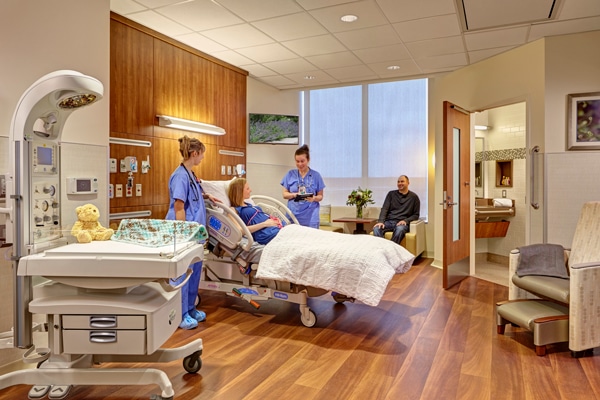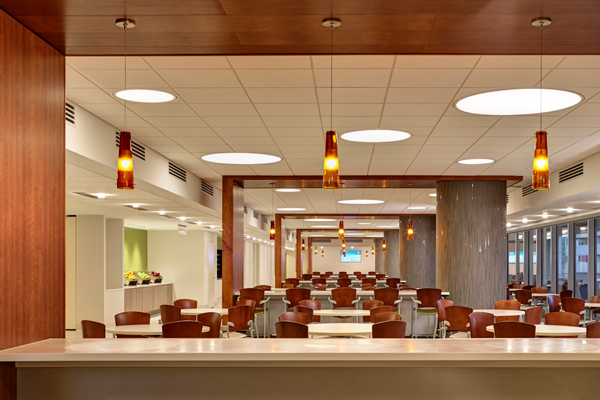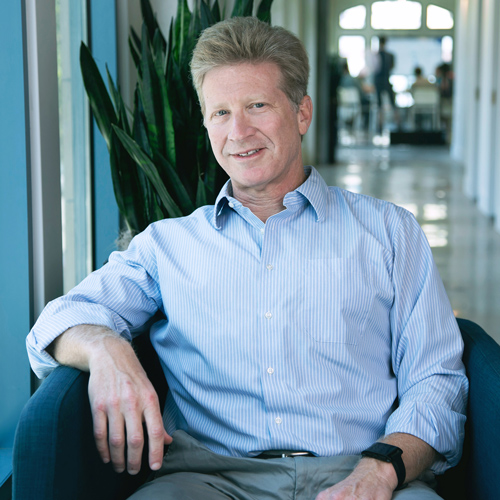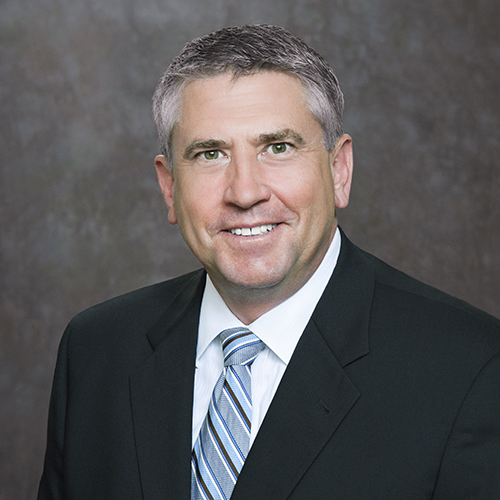In 1998, Patrick Lyons was faced with a choice. His employer, Humana Health Care, was acquired by Advocate Health Care. As the director of facilities management and construction, Lyons could either support the more business-oriented operations of Humana or venture over to Advocate, where his work would center around healthcare delivery. It didn’t take long before he decided on Advocate.
“For me, being involved on the side that actually delivers the healthcare and serves the patients was more rewarding and fulfilling,” says Lyons, who is now director of design and construction. “We’re not the ones cutting the ribbons at the opening of the new buildings, but our gratification comes from the smiles on people’s faces, whether it’s the clinicians, the staff, or the patients, when they walk into a brand new space. That’s enough for us.”
Healthcare wasn’t where Lyons initially saw his career going. He specialized in aircraft maintenance in the Air Force and later secured a degree in aviation, but the start of his career coincided with President Ronald Reagan’s much-publicized firing of 11,000 traffic controllers in 1981.

“The aviation industry was in a bit of turmoil and we thought there would be a remedy,” he says. “But, after several months, it became clear that the industry would not be turning around anytime soon, nor were the air traffic controllers getting their jobs back.”
That led him to back to school and eventually to a job as the manager of engineering at Michael Reese Hospital, which was later acquired by Humana. It was a natural fit, and Lyons’ proactive management style has seen him streamline operations, reduce costs, and usher each organization toward its next reinvention. This sense of forward momentum is what Lyons calls “moving the needle.”
“Moving the needle is only a term if you can’t actually achieve and measure benefits,” he says. “It’s great to talk about it, but you also have to be able to do something about it. You can move the needle in terms of the traditional way of doing things or in new, innovative ways, but it’s really about thinking of how you can bring value to a project versus just getting it done.”
Lyons’ management style reflects this philosophy. “I want everyone to be curious,” he says. “It’s important to learn how to work smarter, so I encourage my team to analyze our processes and share their ideas. None of us are as smart as all of us.” He describes his team members as “change agents,” and, as a manager, works to identify what he calls “your signature” that helps distinguish them as employees.

It was this kind of “move the needle” thinking, that in his early career days at Michael Reese propelled Lyons to help design and implement a new maintenance program that provided structure to an otherwise scattershot operation. “All of a sudden, our costs went drastically down and the reliability on our equipment went way up,” he says, adding that once the positive results revealed themselves, the staff became receptive to what other long-held practices could be revamped.
“We experienced a change in the culture and how we did things,” he says.
In more recent years, Lyons says one of Advocate’s main initiatives is the continuous effort to eliminate waste from construction projects. He’s passionate about lean construction, the means of managing and improving upon standard construction processes while eliminating waste and lowering costs, which he has worked to integrate into his work at Advocate.
At the same time, Advocate, was expanding its efforts to create safe, sustainable environments for its patients. Now, with these efforts a fixture of the hospital group’s planning, Lyons says lean methods have become “hardwired into us.”

Change moves slowly, as the needle often does, with Lyons integrating these methods across a handful of projects and seeing incremental savings. Over time and with subsequent projects, however, the savings began really adding up. “That’s true motivation,” he says, noting how these savings could then be applied to other projects that would not have had the opportunity to be approved due to funding limitations.
Lately, Advocate is increasing lean concepts even further by expanding its modular construction footprint within its projects. It began with 200 standard patient room bathrooms, which were constructed offsite and then delivered and integrated into several bed tower projects. “This has been done elsewhere in the country,” he says of the modular approach, “but we’re one of the first to really try it here in Illinois.”
For Lyons, the benefits were myriad. By building the pods offsite, safety is increased onsite due to fewer workers and less clutter. Furthermore, he touts a consistency in quality, as well as a drastically condensed schedule. As such, Lyons says more modular projects are in the works.
“None of this is new,” he adds, “but it’s not as widespread as it should be.” He calls this particular project a “success story of collaboration,” noting that he and his team couldn’t have done it without their various partners, as well as Advocate itself.
He says of the organization, “I’m fortunate to be with an organization that cares about doing the right thing.”


